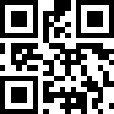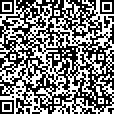Knowledge Base
Overview
This barcode overview contains for each bar code type in condensed form:
- the areas of application,
- the character set (encodable characters),
- the main bar code parameters,
- and a sample bar code.
Technical Data
- Linear and 2D Barcodes
- Data Matrix (ECC 200)
- QR-Code
- PDF417
- GS1 DataBar, GS1 Composite Symbology
- RSS Codes, EAN.UCC Composite Symbology
Reference
This overview contains the list of supported bar codes, which can be used in TEC-IT software. In addition it provides useful background information about bar code parameters (eg Module Width, EAN128 Application Identifiers, etc.) and how to solve typical problems with bar code generation (eg resolution problems, bar code quality etc.).
2D Barcodes
QR-Code (2D Barcode)
QR Code is a two-dimensional barcode created by the Japanese corporation Denso-Wave in 1994. The QR is derived from Quick Response, as the code is intended to be decoded at high speed . QR Code became popular for mobile tagging applications. Because of the built-in support for Kanji encoding, QRCode is widely used in Japan.
 QR Code with encoded URL (Mobile Marketing) |
 QRCode with 6 characters |
 QR Code with 200 characters |
Application Areas of QR Code
QR Code is mainly used in Asia (Japan) for automotive and logistic applications. Starting with 2006/2007 the QR Code is also in use in the areas of mobile marketing and business (eg Japanese business cards).
Depending on the application a QR-Code can be used to encode specific URLs or ticket numbers: in a mobile marketing scenario a QR Code symbol is printed or displayed on products or marketing related material (like displays, magazines or web-sites). A user can now scan and decode this QR Code using a mobile phone with a built-in camera and suitable decoder software. After decoding the QR Code symbol, the user is forwarded to product related web-sites or marketing campaigns.
QRCode Classification
QRCode is a 2D barcode symbology with very high data density. In practice up to several hundred bytes are encoded in a single symbol. Each dot in a QR-Code symbol represents a bit. In contrast to linear bar-codes which encode the information usually in the ratio of the bars or spaces to each other a QRCode is more tolerant with respect to poor printing quality
History of QR Code
QR Code was developed 1994 by the company DENSO.
Aliases of QRCode
QRCode is also known under the names Quick Response Code, QR-Code.
Technical Data
- Normative standards: The normative standards for the QR-Code barcode symbology are named JIS X 0510 (Japan) or ISO / IEC 18004 (ISO International Standard).
- Data capacity: A single QRCode symbol can hold up to 7089 numeric characters, 4296 alphanumeric characters, 2953 bytes (binary data) or 1817 Kanji characters (character set according to JIS X 0208).
- Character set: The original QR Code defines JIS-8 / Shift-JIS as default character set, which corresponds to ECI 000020 (by design other character sets are possible by using different ECIs). While the QR Code 2005 standard (ISO / IEC 18004: 2006) defines Latin-1 as default character set, mobile applications often use UTF-8 as default (without additional ECIs). So it's up to the bar code reader (or decoding application), which character set is used.
- Error correction: QR Code offers a built-in error correction based on Reed-Solomon algorithms. The error correction level can be adjusted (supported levels are Low, Medium, Quartile, High). Depending on the error correction level it is possible to restore between 7% (Low) and 30% (High) of unreadable codewords in a QRCode symbol without data loss.
- QR Code supports 'Structured Append'. Up to 16 QRCode symbols can be concatenated. If a scanner or decoder supports this feature, it returns the concatenated data content in the correct order.
- QR Code printing quality: To optimize barcode quality a QR-Code symbol should not be printed with dots smaller than 4 to 5 device pixels.
Data Matrix (ECC200) - 2D Barcode
Data Matrix is a two-dimensional matrix barcode, which encodes text or raw data in a pattern of black and white square modules . Usual data size is from a few bytes up to 2 kilobytes. By adding error correction codes (according to the ECC200 standard) the symbols can be read even if they are partially damaged.
 2D Barcode Data Matrix with encoded URL (Mobile Marketing) |
 2D Barcode DataMatrix with 6 characters |
 2D Barcode Data Matrix with 200 characters |
Application Areas of Data Matrix
DataMatrix is used for encoding large amounts of data, it is mainly used in Europe and in the United States. The dominating application areas are direct part marking and laser marking - both especially in the aerospace, electronic, and automotive industry. In addition Data Matrix is used for general logistic purposes, document management applications, postal services (digital stamps for the Deutsche Post, Premiumadress Service), and medical / health industry related applications (HIBC).
Starting with 2006/2007 the use of the Data Matrix barcode is also spreading in the area of mobile marketing, in such applications the DataMatrix barcode is also known under the name SemaCode. In a mobile marketing scenario a Data Matrix symbol is printed or displayed on products or marketing related materials (eg displays, magazines, and even web-pages). A user can now scan or decode this DataMatrix using a mobile phone with a built-in camera and suitable decoder software. After decoding the Data Matrix barcode symbol the user is forwarded to marketing or product related web-sites and blogs.
DataMatrix Classification
DataMatrix is a 2D barcode symbology with very high data density. Data Matrix symbols are printed in square or sometimes a rectangular pattern. Each dot of a DataMatrix symbol represents a bit. This is in contrast to linear bar-codes, where the information is encoded in the ratio of the bars or spaces to each other. Usually a black dot in a Data Matrix symbol is equivalent with the bit-value 1, but DataMatrix may also be printed white on black.
History of Data Matrix
Data Matrix was developed by the company RVSI Acuity CiMatrix. This company was later acquired by Siemens Energy and Automation, Inc.
Aliases for DataMatrix
DataMatrix is also known under the name Semacode. As mentioned above this name is used for Data Matrix symbols when used for mobile marketing applications. See www.semacode.org), ECC200 Code, ECC 200.
Technical Data
- Normative standards: The normative standards for the Data Matrix barcode symbology are called ISO / IEC 16022 2000 and ISO / IEC 24720: 2006 (ISO International Standard).
- DataMatrix data capacity: A single DataMatrix symbol can theoretically hold up to 3116 digits, 2335 alphanumeric characters, or 1556 bytes. Due to internal data compression algorithms the exact data capacity depends on the structure of the data to be encoded. The maximum Data Matrix capacity is also influenced by available printing space and the printer resolution.
- The default character set is Latin-1 or ANSI ASCII (equivalent to ECI 000003).
- Error correction: DataMatrix offers a built-in error correction method based on Reed-Solomon algorithms. The error correction level is not adjustable by the user but it is possible to restore approximately 25% of unreadable codewords in a Data Matrix symbol without data loss.
- ECC200: The term ECC200 refers to DataMatrix symbols which are generated according to the latest (and most sophisticated) built-in error correction methods. Older Data Matrix encoding schemes like ECC 000, ECC 050, ECC 080, ECC 100, ECC 140 must not be used for new applications. TEC-IT software only creates ECC 200 DataMatrix symbols.
- Data Matrix supports 'Structured Append'. Up to 16 DataMatrix symbols can be concatenated. If a scanner or decoder supports this feature, it returns the concatenated data content in the correct order.
- Data Matrix printing quality: To optimize barcode quality a DataMatrix symbol should not be printed with dots smaller than 4 to 5 device pixels.
GS1 Data Matrix (ECC 200)
Because of its technical advantages the GS1 organization considered the DataMatrix 2D barcode symbology for its system.
The so called GS1 or EAN Data Matrix is a standard DataMatrix symbol (ECC 200) with an internal GS1 identifier in the data structure (like the FNC1-Prefix in an GS1-128). The use of Application Identifiers is supported, this is comparable to the linear barcode GS1-128 / EAN-128 or GS1 DataBar Expanded, where a code word similar to FNC1 acts as a field separator.
PDF417 (2D Barcode)
PDF417 is a 2d barcode (stacked symbology) used in a variety of applications, primarily transport, identification cards, and inventory management. PDF stands for Portable Data File and was developed by Symbol Technologies. PDF417 uses built-in error correction to ensure better readability.
 |
 |
PDF417 Application Areas
PDF-417 is used for encoding large amounts of data, usually up to one or two-hundred characters are encoded in a single symbol.
The PDF417 symbology is mainly used in Europe and in the United States. The 2D barcode symbology is mostly utilized in the areas of logistic applications (especially in the automotive industry), transport systems (eg for shipping labels), identification (eg driver licenses, passports) and document management.
PDF417 Classification
PDF417 is a 2D barcode symbology (two-dimensional barcode) with very high data density. A single PDF417 symbol can be imagined as multiple linear bar-codes (called "rows") stacked above each other. This is the reason why the PDF417 symbology is sometimes called a "stacked linear symbology". The overall shape of a PDF417 is rectangular. The size of the symbol can be modified by the user. The ratio of the widths of the bars (or spaces) to each other encode the information in a PDF417 symbol. For that reason the printing accuracy and a suitable printer resolution are important for high quality PDF417 symbols. Pure 2-D barcode symbologies like Data Matrix or QR Code encode the information in the presence of black or white dots at specific positions - and not by using bar: space ratios.
PDF417 History
PDF 417 was developed +1991 by the company Symbol. This company was recently acquired by Motorola.
PDF417 Aliases
PDF417 is also known under the names PDF-417, Portable Data File and PDF 417. The term Macro PDF (or Macro PDF417) is used when concatenating multiple PDF417 barcode symbols (see below - Structured Append).
PDF417 Technical Data
- Normative standards: The normative standard for the PDF 417 barcode symbology is called ISO / IEC 15438: 2001 (ISO International Standard).
- PDF417 data capacity: A single PDF417 symbol can theoretically hold up to 1850 alphanumeric characters, 2710 digits or 1108 bytes. Due to internal data compression algorithms the exact data capacity depends on the structure of the data to be encoded. The maximum PDF417 capacity is also influenced by available printing space and the printer resolution.
- The default character set is CP437.
- Error correction: PDF417 offers a built-in error correction method based on Reed-Solomon algorithms. The error correction level is adjustable by the user between level 0 (just error detection) and level 8 (maximum error correction). Recommended error correction levels are between level 2 and 5, but the optimal value depends on amount of data, printing quality of the PDF417 symbol and decoding capabilities.
- PDF417 supports 'Structured Append', in such a case the symbology is named Macro PDF417 or MacroPDF. Theoretically up to 99999 PDF417 symbols can be concatenated. If a scanner or decoder supports this feature, it returns the concatenated data content of all PDF417 symbols in the correct order.
GS1 DataBar & Composite Variants
EAN.UCC & RSS Composite Symbology
Reduced Space Symbology (RSS) was renamed to GS1 DataBar in March 2007, and is expected to be the global bar code standard in the near 2010 року.
 RSS-14 |
The EAN UCC Composite Symbology is a combination of a linear barcode component (or RSS bar codes) and a special 2D symbol Composite Component (CC) printed on top. The linear component or RSS (eg RSS-14) encodes the item's primary identification. The adjacent 2D Composite Component (CC) encodes supplementary data, such as a batch number and expiration date.
For the linear barcode component choose between a:
- EAN / UPC symbology (EAN-13, EAN-8, UPC-A, or UPC-E),
- a member of RSS-Reduced Space Symbology family (eg RSS-14),
- or an UCC / EAN-128
The linear component determines the name of the composite symbol, such as an EAN-13 composite symbol, or an UCC / EAN-128 composite symbol.
Composite symbols are designed to be scanned with a hand-held laser, a linear CCD, or a 2D imaging scanner.
3 Versions of 2D CC-Composite Components
CC-A (Composite Component - Version A) - CC-A is a variant of MicroPDF417 Symbol with a unique combination of row address patterns (RAP). It is the smallest variant of the 2-dimensional composite component. Up to 56 digits of alphanumeric data can be coded with 3 to 12 rows and 2 to 4 columns.
CC-B (Composite Component - Version B) - CC-B is a subset of MicroPDF417 Symbol, which is identified by the Code 920. Encoding systems choose CC-B automatically when CC-A has not enough capacity than needed. CC-B encodes up to 338 digits of alphanumeric data in 4 to 44 rows and 2 to 4 columns.
CC-C (Composite Component - Version C) - The CC-C structure is a PDF417 Symbol, which is clearly identified by the internal code word 920 (920 is the first code word after the symbol length indicator). The CC-C structure can be used as a 2 dimensional composite component of a UCC / EAN-128 Composite Symbols. It has the largest data capacity of EAN.UCC Composite Symbols because of its possibility to code of up to 2361 numbers. It can code numbers with up to 2361 digits of alphanumeric data, which have a minimum of 3 to 30 rows and up to 30 Data-Error-checking-Code-Columns.
| Linear Symbol | CC-A / CC-B | CC-C |
|---|---|---|
| RSS-14 | Yes (4 Columns)
|
No |
| RSS-14 Stacked | Yes (2 Columns)
|
No |
| RSS-14 Stacked Omnidirectional | Yes (2 Columns)
|
No |
| RSS Limited | Yes (3 Columns)
|
No |
| RSS Expanded | Yes (4 Columns)
|
No |
| RSS Expanded Stacked | Yes (4 Columns)
|
No |
| UPC-A | Yes (4 Columns)
|
No |
| EAN 13 | Yes (4 Columns)
|
No |
| EAN 8 | Yes (4 Columns)
|
No |
| UPC-E | Yes (2 Columns)
|
No |
| UCC / EAN128 | Yes (4 Columns)
|
Yes (variable width)
|
GS1 DataBar Barcode Symbology
GS1 DataBar is a newer global bar code standard which will be adopted in the near 2010. GS1 DataBar would be available on all trade item scanning systems , and retail POS (point of sale) scanners should be able to differentiate between the various GS1 barcode symbologies by then.
 GS1-DataBar |
 GS1-DataBar Stacked |
 GS1-DataBar Stacked |
 GS1-128 Composite Symbology |
Application Areas
GS1 DataBar is widely used in the health care industry for both pharmaceuticals and medical / surgical products, by GS1 Member Organizations (MOs), consumer goods manufacturers and trade associations.
History
GS1-DataBar, formerly called Reduced Space Symbology, was renamed to GS1 DataBar to avoid confusion with the popular RSS XML Feed technology, which is very broadly used on the Web for "Really Simple Syndication".
GS1 DataBar is an even newer standard which will become official in the near 2010. GS1 DataBar would be available on all trade item scanning systems, and retail Point-of-Sale (POS) scanners should be able to differentiate from the various GS1 barcode languages by then.
In the beginning, UPC or Universal Product Code was used in North America. But in 2005, the EAN-13 or the European standard was adopted as the global bar code standard. GS1 DataBar, however, is not expected to revolutionize the retail trade. But rather seen as a stepping stone to the adoption of Electronic Product Codes (EPC-RFID) carried on RFID devices.
























Коментарі
Коментуючи, пам'ятайте про те, що зміст і тон Вашого повідомлення можуть зачіпати почуття реальних людей, проявляйте повагу та толерантність до своїх співрозмовників навіть у тому випадку, якщо Ви не поділяєте їхню думку, Ваша поведінка за умов свободи висловлювань та анонімності, наданих інтернетом, змінює не тільки віртуальний, але й реальний світ. Всі коменти приховані з індексу, спам контролюється.